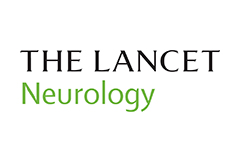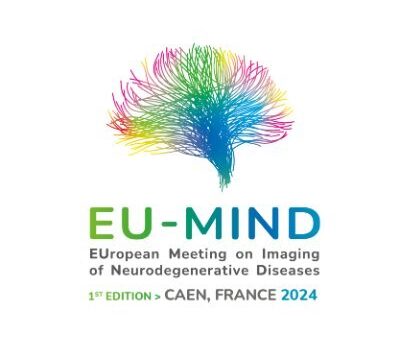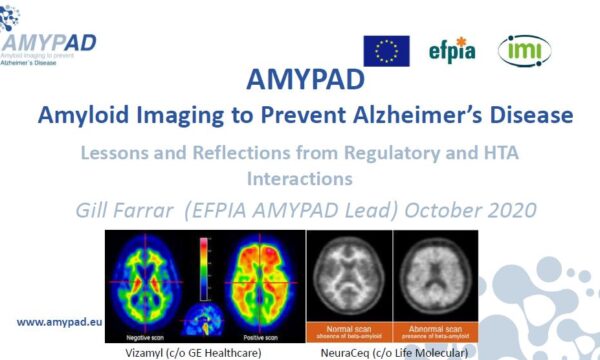What is your current role in AMYPAD?
I am co-leading the Work Package 4 “Risk stratification: Natural history and enrichment strategies” with Lisa Ford from Janssen. The aim of this Prognostic and Natural History Study (PNHS) is to evaluate the value of quantitative PET amyloid imaging measures for predicting progression within an AD risk probability spectrum. To achieve this goal, we are working with the broader consortium and our colleagues from VUmc who have taken on the role of study sponsor. Additionally we work closely with EPAD to integrate the AMYPAD PNHS protocol with the ongoing EPAD Longitudinal Cohort Study (LCS). There is a close interaction between both projects and we help the project’s relationship and alignment with EPAD. We tackle all the technical (i.e. scientific and ethical) and logistical operations to support the realisation of the prognostic study in AMYPAD.
What is your overall vision?
My overall vision for the AMYPAD PNHS is to be in a very strong position to understand the natural history of Alzheimer’s disease. We also have a huge amount of data being collected from the EPAD study. I see AMYPAD as a true game-changer in terms of understanding the disease before dementia develops through ß-amyloid PET imaging. This same notion applies to the diagnostic study where I am the principal investigator in Edinburgh. What truly excites me is the opportunity to have a huge amount of information and knowledge on the utilisation of amyloid PET imaging for the diagnostic thinking and patient management. We will gain a clinical utility through the estasblisment of the true value of ß-amyloid PET imaging as a diagnostic, prognostic and therapeutic marker for Alzheimer’s disease. We also count on the fantastic contribution of many partners from both the academia and the companies to form a pan-European network.
What do you find most challenging about the project?
I think that one of the biggest challenge, common to many major projects of this type, is to coordinate the activities and the operational aspects of the different stakeholders spread all across Europe. The operational governance is a major issue of such an ambitious project, which includes so many parties. Each clinical center has different requirements, practices, rules and regulations, which sometimes can take a while to work through. We have to create methologies/procedures and make sure that the ressources are in the right place. I am glad to say that important advances have been made for both studies. They are now both opened and recruiting participants – we are looking forward to take on the next steps ahead.


